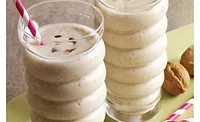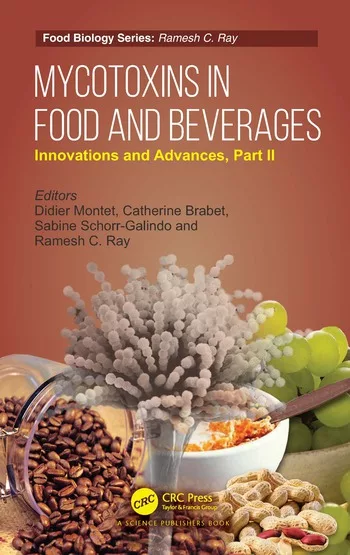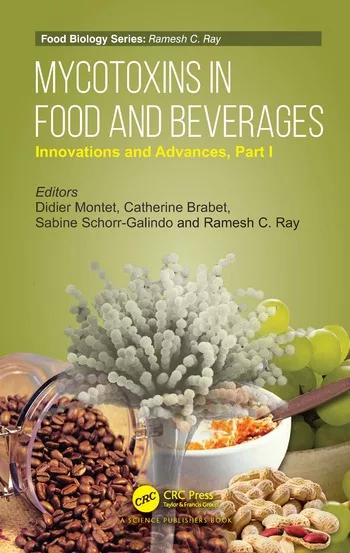Plant-based proteins power up beverages
Protein top trend in new product launches
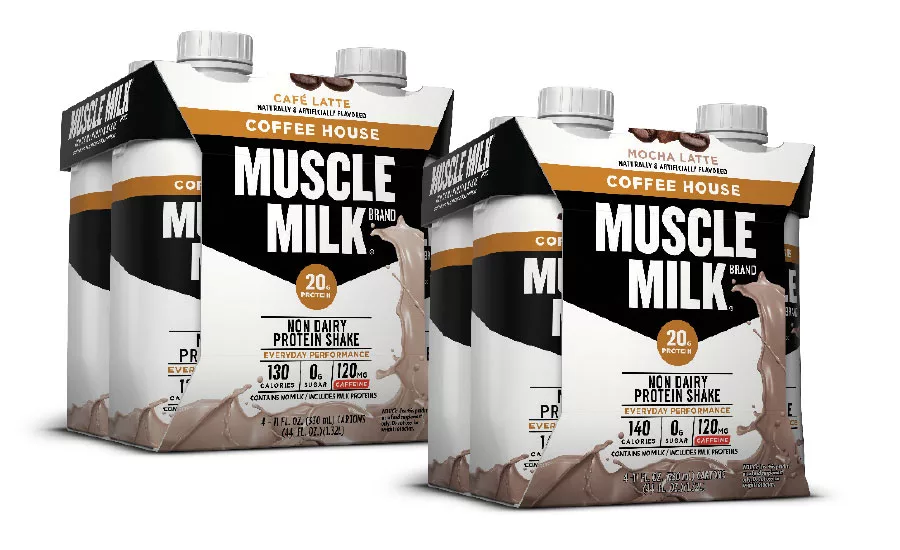
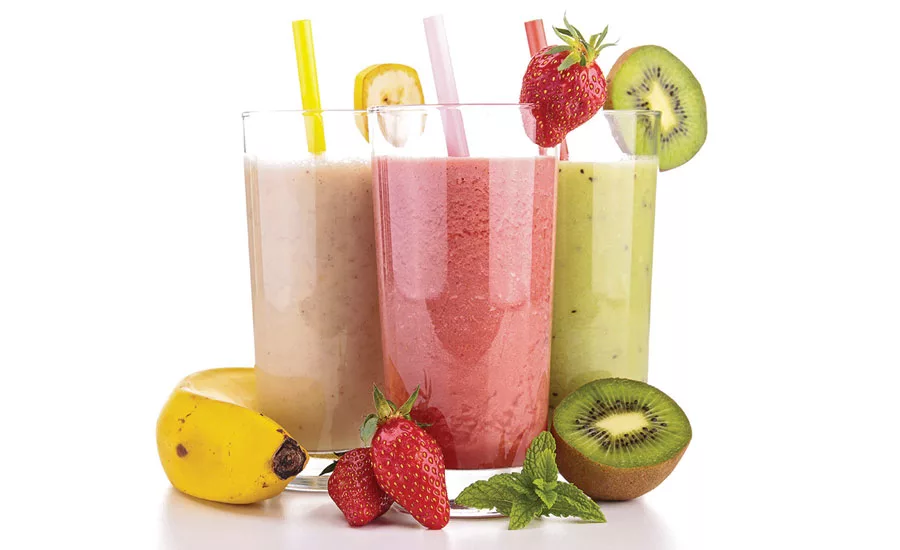
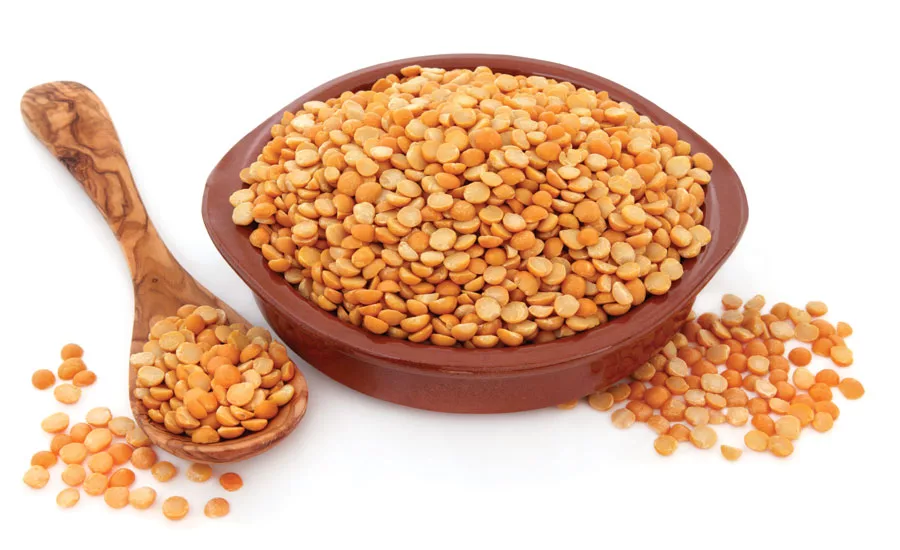


With health-and-wellness trends driving product innovation, protein is making its move throughout the aisles as 17 percent of new products contain protein, according to Chicago-based Information Resources Inc.’s August New Product Pacesetters report “Harvesting the Fruits of Innovation Done Right.” Chicago-based Mintel also notes the role protein ingredients are playing in consumer packaged goods. Between 2011 and the third quarter of 2016, whey proteins, milk proteins and caseinates were the top three proteins used in new beverages in North America with soy proteins and pea proteins rounding out the Top 5, according to its Global New Products Database (GNPD).
However, for the global food and drink market, plant-based proteins are No. 1 for new product development. With options like soy, lentils,
hemp and chia, new products featuring plant-based proteins increased from 4 percent in 2011 to 6.5 percent in 2016, while new products using milk-based proteins grew from 3.7 percent in 2011 to 5 percent in 2016, based on GNPD data.
In line with this, beverage-makers are incorporating protein into a wide variety of applications, including dry-mix powders and on-the-go stick packs as well as in concentrates like gels and shots. Protein also is used in a variety of ready-to-drink (RTD) nutritional beverages as well as smoothies, waters, juices and energy drinks.
Although protein primarily is used in non-alcohol beverages, Grace Harris, director of applications and business development for Hilmar Ingredients, Hilmar, Calif., notes the use of protein to fortify beer is increasing, and she suggests that wine or spirits could be next.
“Whey proteins can help with emulsification, impart a creamy mouthfeel and are heat stable, so they could be of interest in a crème liquor such as an Irish crème,” she says. “Even the ‘portable party’ alcohol shots could use a clear protein like whey protein isolate.”
More beverages from various categories containing protein are hitting store shelves. For example, Walnut Creek, Calif.-based CytoSport Holdings Inc., makers of Muscle Milk, launched Evolve, a new plant-based line of protein drinks, while Optimum Nutrition, a division of Downers Grove, Ill.-based Glanbia Performance Nutrition, and BiPro, a brand of Le Sueur, Minn.-based Davisco Foods, both launched protein waters.
An essential nutrient
As part of a healthy lifestyle, protein functions as building blocks for bones, muscles, cartilage, skin and blood, according to the U.S. Department of Agriculture (USDA). Proteins also act as building blocks for enzymes, hormones and vitamins, the USDA adds.
Yet, the amount of protein needed by consumers varies by age, health condition and lifestyle, according to the Washington, D.C.-based International Food Information Council Foundation’s website. For example, the recommended dietary allowance (RDA) for a child between the ages of 9 and 13 is 34 grams of protein a day, while the RDA for an adult weighing between 150 and 200 pounds is 54-72 grams of protein a day, it states.
There are two main categories of proteins: animal-based and plant-based. Animal-based proteins include milk proteins (casein, whey) and egg proteins, while vegetable proteins can be found in numerous sources, including soy, hemp, chia, canola, almond, potato, peanut, flax, pulses, and legume proteins such as pea, chickpea and lentil, says Amr Shaheed, commercial development manager of beverage at Innophos Inc., Cranbury, N.J.
“Each protein provides its own unique texture and flavor characteristics,” he says. “Some have unique functional properties, such as the foaming properties of egg proteins. Certain proteins are considered ‘higher quality’ than others with regards to their ability to deliver essential amino acids, their PDCAAS score (protein digestibility corrected amino acid score). For example, whey and egg white proteins are considered ‘complete’ proteins, while different types of vegetable proteins may need to be blended together in order to provide a complete amino acid profile.”
Because of their sustainability and nutritional benefits, plant-based protein launches have become a top trend in the beverage market, according to experts.
The popularity of protein
The growing popularity of vegan and flexitarian lifestyles, along with consumers’ on-the-go lifestyles, are contributing to the prominence of protein fortification, according to Kati Ledbetter, beverage applications manager for Archer Daniels Midland (ADM) Co., Chicago.
“Protein-fortification projects top our list of customer requests,” she says. “… The recognition of the health benefits of protein across all consumer demographics requires a variety of protein products to satisfy these different tastes.
“The increase in vegan and flexitarian lifestyles requires plant-based proteins that can be combined to create good-tasting protein fortification,” she continues. “Factor in replacement of dairy protein with plant-based proteins for cost reduction, and there is no end in sight to protein projects.”
To compete in a crowded beverage market, beverage-makers increasingly are interested in adding functionality as opposed to only offering refreshment, says Will McCormack, business development manager of nutrition for Wauconda, Ill.-based Synergy Flavors Inc.
“The lines that used to define mainstream beverages continue to blur as hybrid or fusion beverages emerge such as cold-brew coffee, sparkling teas or protein-enhanced juices,” he explains. “This beverage blurring is encouraging beverage-makers to gravitate toward protein to further differentiate their products in the saturated market of functional beverages.”
McCormack notes that plant-based proteins are on the rise in a variety of products due to their sustainable call-out, natural, free from and vegan claims, while blends of plant and animal proteins also provide considerable formulation opportunities due to their enhanced organoleptic properties.
Although soy protein was one of the first plant proteins to build significant market share in the beverage category, products formulated with pea proteins now are gaining ground because of their many benefits, says Joe O'Neill, vice president of sales and business development for Fairfield, N.J.-based A&B Ingredients Inc.
“Peas are naturally free from cholesterol and are not included in the list of major allergens (unlike soy and gluten),” he explains. “[P]ea proteins are non GMO and are favored over soy protein because of their low allergenicity and absence of phytoestrogens normally associated with soy protein. … Improvements made in clean taste and solubility have played a key role in establishing pea protein as an ingredient of choice in new product formulations.”
In addition to pea proteins, milk, whey and soy proteins formulate well within beverages because of their high solubility and nearly neutral taste, which enables them to be added at higher dosages, O’Neill adds.
Whey proteins also have the highest digestibility factor and work the best in sports nutrition drinks versus other plant-based proteins, says Brad Nielsen, marketing manager for Grande Custom Ingredients Group, Fond du Lac, Wis.
“Whey proteins also taste better as they are derived from milk versus plant products, which can taste 'beany,’” he says.
Synergy Flavors’ McCormack also points to the benefits of milk proteins. “Milk proteins remain dominant in the performance nutrition area due to their high-quality amino acid profile and the associated benefit in terms of muscle growth repair and recovery,” he says. “… Milk protein and, in particular, whey protein benefit from their rapid digestion and absorption kinetics.
“Milk protein concentrates and isolates, caseinates and whey protein concentrates and isolates can all be included depending on the desired functional properties and product-specific call-outs,” he continues. “Casein and milk protein also offer good heat stability for processing — although recent advances in manufacturing technology have seen improved offerings for heat stable whey proteins.”
Although plant-based proteins have lower digestibility compared with animal-based proteins, new solutions are being developed. For instance, Cleveland-based Ganeden released studies showing that its probiotic strain, GanedenBC30, increases digestibility for pea, rice and soy proteins; aids in the breakdown of peptides; provides better amino acid utilization; and helps reduce unabsorbed protein delivery to the colon — avoiding the production of toxic metabolites, it says. The strain also enhances the body’s utilization of animal-based protein and helps with muscle recovery, it adds.
As RTD protein beverages continue to grow in popularity, beverage formulators have a wide range of protein systems at their disposal. For example, Belgium-based Cosucra offers Pisane C9 Premium, a pea protein isolate that is designed for canned RTD beverages where taste, solubility and low spore-counts are critical parameters in the product design, the company says.
Additionally, White Marsh, Md.-based TIC Gums has expanded its portfolio of texture and stability solutions with Ticaloid Ultrasmooth NGMO Original, a cold-water soluble hydrocolloid system used in non-GMO instant-protein beverages to help stabilize and improve suspension of the protein in these beverages. It also decreases astringency and improves mouthfeel and viscosity, the company says.
Rice bran protein also is becoming a go-to ingredient in healthy, sports and performance drinks and smoothies, according to Robert Smith, interim chief executive officer at RiceBran Technologies (RIBT).
The Scottsdale, Ariz.-based company developed technology to stabilize and capture the bran and germ layer of rice and convert it into a range of natural, non-GMO, gluten- and soy-free rice bran ingredients that are loaded with protein, fiber and gamma oryzanols, Smith says.
“Our clean-label ingredients are … a great source of vegetarian/vegan macronutrients including plant-based protein, complex carbohydrates, dietary fiber and healthy fats,” he says. “… While just 8 percent of the rice kernel has nutritional value, rice bran has 25 times the dietary fiber and four times the protein as white rice.”
The company recently introduced its proprietary Proryza Gold, which contains 25 percent protein and 50 percent dietary fiber, as an applicable solution for beverages, protein powders and more, it adds.
Mix-and-max proteins
Although there are many choices for protein fortification in beverages, achieving the appropriate level of protein is one of the biggest hurdles for beverage-makers to overcome, ADM’s Ledbetter says.
“It’s critical to work with a partner to mix and match proteins for optimum cost-effectiveness, taste and protein levels,” she says. “Many customers are looking for protein sources to deliver protein content equivalent to a cup of milk.
“Many times that means blending different plant-based proteins to get the right content and quality protein as well as the desired flavor and texture for the product,” she continues. “Products like ADM’s Clarisoy, which is an isolated soy protein that can be easily added to beverages, are also good solutions to add protein to beverages in a cost-effective way.”
But, whether it’s regular ultra-high temperature processing (UHT) or medical-grade sterilized liquid nutrition products, the challenges of formulating with proteins are present, A&B Ingredients' O'Neill notes. When working with protein, beverage-makers need to be on the lookout for solubility issues, providing a clean taste, maintaining a correct viscosity, being aware of possible interactions with other ingredients, such as minerals, and guaranteeing a long shelf life, O’Neill says.
“Nutrition and health claims are also important considerations as well as the needs of the target market,” he adds. “Product claims may include vegan/vegetarian, good source of protein source or free-from.”
To avoid the gelation and sedimentation issues that beverage formulators could encounter with protein-mineral interactions and to help with shelf-life stability issues, phosphates can be added to a protein-based beverage, Innophos’ Shaheed says.
“Phosphates can be used to help stabilize protein-based beverages and avoid age gelation and pH shifts by buffering the pH in the target zone,” he explains. “… Polyphosphates will help to stabilize the proteins in UHT where they may experience in-process fouling of proteins [due to ultra-pasteurization]. By controlling fouling, the maintenance cycle can be extended and flavor maintained; there also is less risk of burnt flavor profiles due to fouling.”
The growing smoothie category also can present formulation challenges, says Wen Shieh, technical leader of fruit, beverage and confections at Minneapolis-based Cargill. “We are seeing a great deal of growth in protein beverages that bring juice and dairy together,” he says. “To stabilize proteins in this pH environment, product developers turn to high methoxyl pectins such as Unipectine AYD or Vitex AYD pectin. These pectins coat the surface of the protein, preventing sedimentation problems.”
Carrageenan also can help stabilize neutral-pH beverages containing protein and electrolytes, says Cargill’s Project Manager Brian Surratt.
“[I]t stabilizes proteins and provides properties such as thickness, viscosity, fat mimetic or creaminess aspects to one’s finished beverage,” he says. “… Factors such as high water content, low viscosity medium, ionic strength and lipid and/or particulate suspension are the most common pieces for scientists to manage. Control measures such as carrageenan help solve this stabilization puzzle … by keeping particles such as potassium, calcium, magnesium and proteins in suspension.”
With a wide variety of proteins and products from which to choose, flavor choices beyond vanilla, chocolate and strawberry, coupled with improved scientific knowledge and formulation techniques, proteins will continue to add versatility in the market, experts say.
“Overall, the market drive for protein-fortified beverages will evolve from a trend to the mainstream,” Innophos’ Shaheed says. “With time, a greater number of cross-functional product launches, pairing protein with one or more other claims. Examples would include caffeinated protein beverages, protein-fortified sports drinks and protein-fortified electrolyte shots.”
When it comes to protein enhancement, no beverage is off limits, Synergy Flavors’ McCormack says. “But it can be more successful if it is paired with a trending beverage application. For example, developing protein-enhanced cold-brew coffees and fortified matcha tea to leverage beverage trends.
“Plant-based proteins will continue to rise and become more common,” he continues. “Pea and soy proteins are likely to remain dominate plant proteins, but rice, ancient grain, potato and mushroom protein are expected to increase in the future. … Utilizing organic-certified flavors that can work on protein-enhanced/fortified beverages, but have a new and exciting twist, like organic banana spice, can continue to make an impact in the segment.” BI
Looking for a reprint of this article?
From high-res PDFs to custom plaques, order your copy today!



